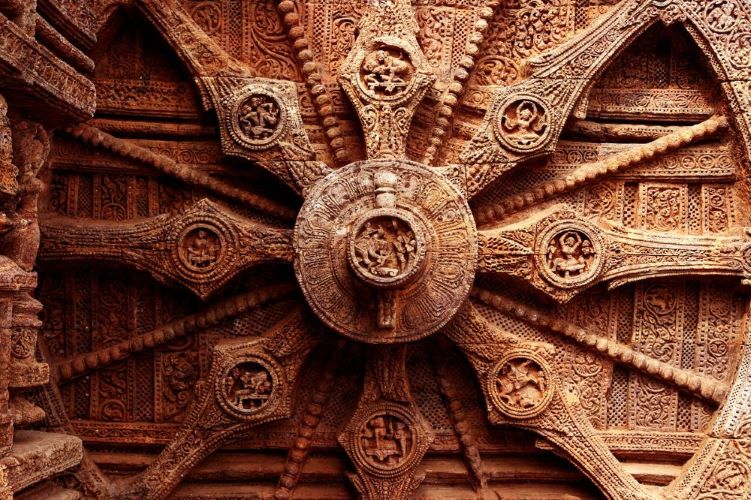Nāstika & Consumerism Philosophy: Chārvāka

Indian philosophy is a rich and diverse tapestry of thought that has evolved over thousands of years, offering profound insights into the nature of reality, the self, and the cosmos. It encompasses a wide range of schools and traditions, each with its own unique perspectives and methodologies. From the introspective and meditative practices of the Upanishads and Vedanta to the logical rigor of Nyaya and the ethical teachings of Jainism and Buddhism, Indian philosophy addresses fundamental questions about existence, knowledge, and the human condition. These philosophical traditions not only explore metaphysical and epistemological issues but also provide practical guidance for living a meaningful and ethical life. Whether through the asceticism of Yoga, the devotion of Bhakti, or the materialism of Chārvāka, Indian philosophy offers a multifaceted approach to understanding the world and our place in it.
Chārvāka Philosophy
Ancient Indian philosophy can be divided in two types , 1. Astika (One wo believes in authority of vedas) 2. Nastika ( One who don’t believe in authority of vedas). In the realm of Indian philosophy, the Chārvāka school stands out as a unique and controversial perspective known for its materialistic and atheistic worldview. Often categorized under the broader term “Nāstika” (deniers of Vedic authority), Chārvāka challenges the spiritual and ascetic traditions of Hinduism, advocating for a philosophy rooted in direct perception, empirical evidence, and skepticism of the supernatural. This school of thought, with its emphasis on enjoying worldly pleasures and rejecting the afterlife, bears intriguing parallels to contemporary consumerism. By examining Chārvāka’s doctrines and their relevance to modern consumerist culture, we can gain insights into the enduring human quest for happiness and fulfilment through material means.
Charvaka is the first and foremost nāstika darśana. Tradition names it as lokāyata, meaning, ‘which appeals to the mass’. This philosophy is attributed to Bṛhaspati or his disciple as it has got another name as Bārhaspatya darśana.
Chanakya in his Arthaśāstra, a treatise on public administration and finance, has called Bṛhaspati as the foremost teacher of Arthaśhāstra. This philosophy is believed to be as old as Vedic tradition. It is an extreme nastika darshana which believes only one means of valid knowledge, i.e., direct perception or pratyakṣa and all other sources of knowledge are not trustworthy or misleading. Since only pratyakṣa is the valid means of knowledge, whatever is not there in its purview is not a true knowledge at all.
So according to Chārvāka, not any supernatural power is god, but the king who possesses the power of punishing or rewarding over the people should be considered as god, since we get to know him through direct perception. Similarly, mokṣa (liberation) means death, bodily pleasure is svarga (heaven) and pain is naraka (hell). Forget about rebirths and which we don’t perceive through our sense organs. Even this philosophy discards the fifth fundamental element of the universe, i.e., the ākāśa (the space) as it is not perceived to us. So, for him, only four fundamental elements are there, viz., earth, water, fire and air, which our sense organs can perceive.
As Chārvāka is a fully materialistic philosophy, one question may be asked, i.e., if only body is the reality where does mind or consciousness come from which cannot be perceived by any of our sense organs, like eyes, ears, nose, tongue or skin. For this, Chārvāka has answered with an analogy. According to Chārvāka, consciousness is not a different entity, but a by product of matter, just like we observe the living objects coming out of decomposing things. Original text of Chārvāka is not available to us, which perhaps has been lost in the tradition. Whatever narratives are known to us, are found scattered in various literatures in Sanskrit. Views of Chārvāka had been compiled by a philosopher, viz., Mādhava Vidyāraṇya (A.D. 1296 to 1386. It firmly criticises the practice of sacrifices in various rituals in the pretext of dharma.
The salient features of this philosophy are as follows:
- World is made up of four elements: air (vāyu), fire (agni), water (ap), earth (pṛthvi – ). Chārvāka rejects sky (ākāśa).
- There is no soul.
- There is no God.
- Rejection of two of the four puruṣārthas i.e., dharma and mokṣa.
Conclusion
Enjoyment is the ultimate end. From a bird’s-eye view, though we can point out many flaws in this philosophy, particularly from the viewpoint of logical accuracy, this philosophy is adored across the mankind for its simplicity and practicality.
It’s very interesting to know that masses of ancient india were astika (The one who believes in Veda’s) However charvaka’s found there places in old religious text and even many times refer as “Rishi charvaka “This shows the accommodative nature of Indian culture of different thoughts and further force us to think that whether the “dimension of being Hindu “is much more larger than what we think as a Hindu in a modern sense. And also that whether the charvaka was the first capitalist in modern sense who bring the prospectus of ultra-consumerism.
Famous Charvaka Shloka
यावत् जीवेत् सुखम् जीवेत्।
ऋणं कृत्वा घृतं पिबेत्।
भस्मिभूतस्य देहस्य पुनरागमनं कुतः।
Meaning: As long as you live, live happily. Take debt and drink ghee. Once the body is reduced to ashes, how can it come back!
Observer Voice is the one stop site for National, International news, Sports, Editor’s Choice, Art/culture contents, Quotes and much more. We also cover historical contents. Historical contents includes World History, Indian History, and what happened today. The website also covers Entertainment across the India and World.

